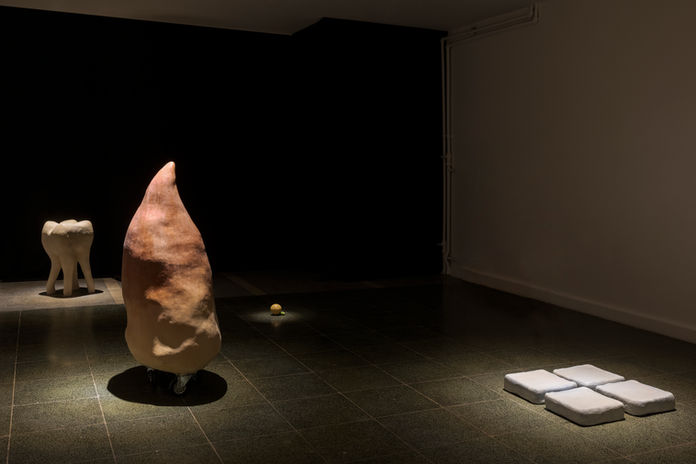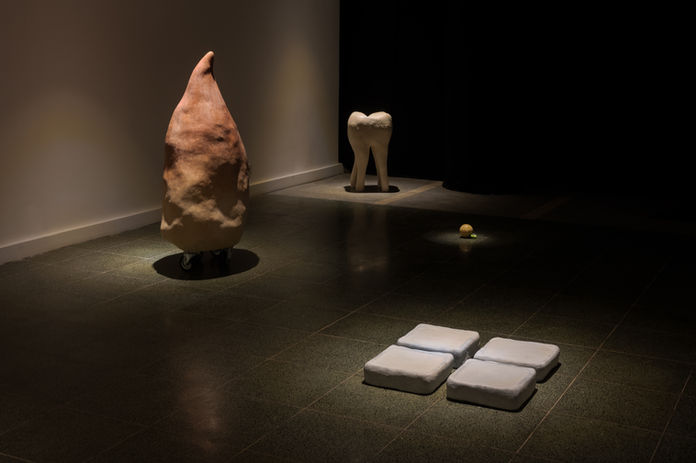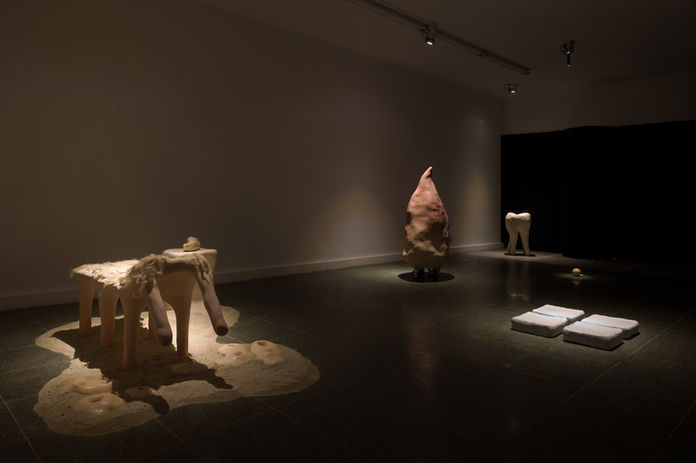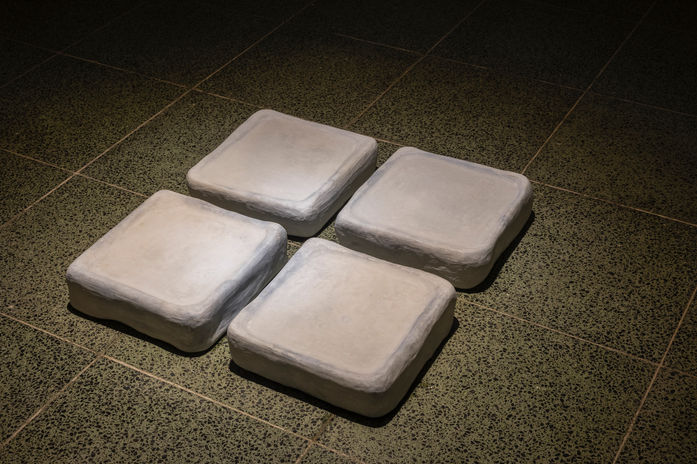Fossils, Ordinary Stones, Precious Stones features the artist's technical and sensory
inferences about the hemp-based construction material "hempcrete" and the lime
plastering method "tadelakt" through a series of objects.
Referring to the patterns of touch involved in the production-consumption process, the
exhibition scrutinizes the changing values attributed to bodies and stones, and raises the
question of at what point touching ceases to be an act of love.
Tadelakt is produced by rubbing and caressing, by acting as a tellak in a sense, thereby
presupposing that the relationship between the producer and the material is based on
compassion and care; however, the instrumentalization of these materials that make the
practice possible is enabled only by means of destructive actions such as ripping, plucking,
breaking, and crushing.
Limestone, the key component of all the works in the exhibition, is similar to our bones in
that it is formed from calcium, and it carries connotations of ancient water sources that
harbor millennia-old fossils.
By approaching the manufactured objects as monitoring surfaces reflecting the labor
embedded in the materials and the overlooked actors, the exhibition invites the viewers to
pay attention to the often-silenced narratives in the realm of artistic expression and to
recall that production is not limited to the producer.
Dictionary of Method
Tadelakt: Moroccan Arabic; تدلاكت; Latin; tadla:kt ; to rub or massage, to embrace
Hempcrete (hemp+concrete): Hemp; Greek; (kánnabis) + Concrete: Latin;
concretus (compact,condensed), concrescere (con-together & crescere-to grow, rise,
thrive)













